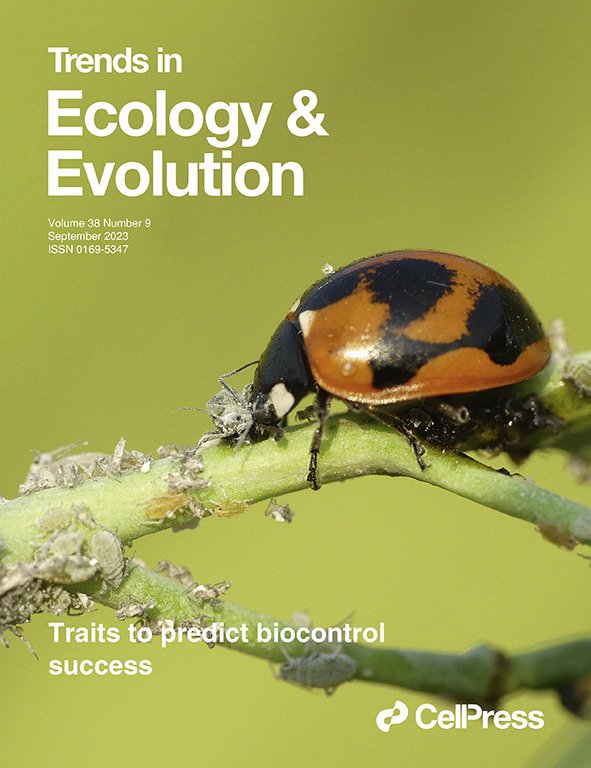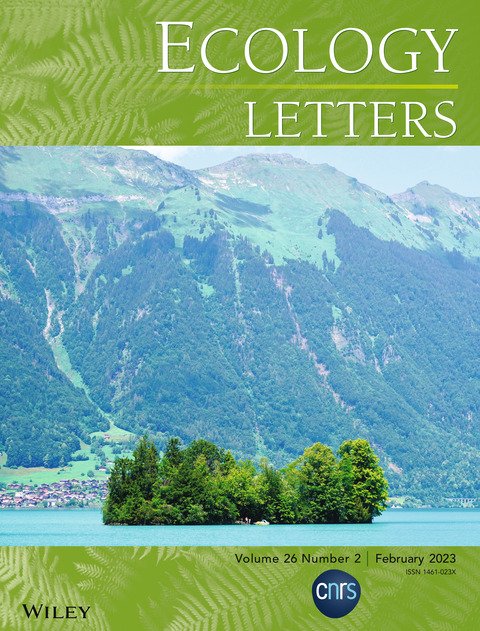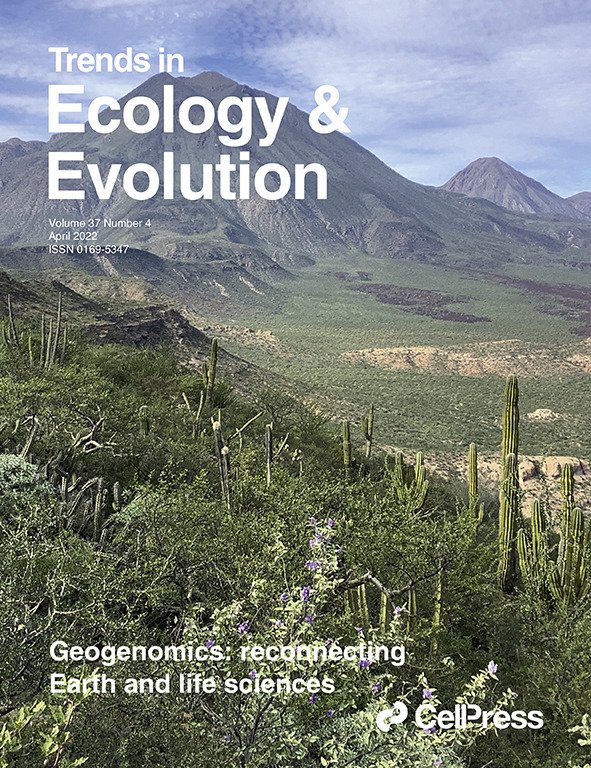2025
[41] Twining, C.W., Blanco, A., Dutton, C., Kainz, M.J., Harvey, E., Kowarik, C., Kraus, J.M., Martin-Creuzburg, D., Parmar, T.P., Razavi, N.R., Richoux, N., Saboret, G., Sarran, C., Schmidt, T.S., Shipley, J.R., and A.L. Subalusky. (2025). Integrating the bright and dark sides of aquatic resource subsidies—A synthesis. Ecology Letters, 28(4), p.e70109.
[40] Komar, E., Szafranska, P.A., Dechmann, D.K.N., Keicher, L., Koprowska, D., Shipley, J.R., and I. Ruczynski. (2025). Positive consequences of group living among male bats during spermatogenesis. Journal of Experimental Biology
2024
[39] Shipley, J.R., Oester, R., Mathieu-Resuge, M., Parmar, T.P., Kowarik, C., Ilíć, M., Kainz, M.J., Martin-Creuzburg, D., Obrist, M., Graham, C.H., Gossner, M., Matthews, B., and C.W. Twining. (2024). Consumer biodiversity increases organic nutrient availability across aquatic and terrestrial ecosystems. Science
[38] Shipley, J.R., Frei, E.R., Bergamini, A., Boch, S., Schulz, T., Ginzler, C., Barandun, M., Bebi, P., Bolliger, J., Bollman, K., Delpouve, N., Gossner, M.M., Graham, C.H., Krumm, F., Mauro, M., Pichon, N., Rigling, A., and C. Rixen. (2024). Agricultural practices and biodiversity: Conservation policies for natural grasslands in Europe. Current Biology
[37] Berv, J.S., Singhal, S., Walker-Hale, N., McHugh, S.N., Shipley, J.R., Miller, E.T., Kimball, R.T., Braun, E.L., Dornburg, A., Parins-Fukuchi, C.M., Prum, R.O., Winger, B.M., Friedman, M., and S.A. Smith. (2024). Genome and life-history evolution link bird diversification to the end-Cretaceous mass extinction. Science Advances
[36] Keicher, L., Shipley, J. R., Dietzer, M. T., Wikelski, M., & Dechmann, D. K. N. (2024). Heart rate monitoring reveals differential seasonal energetic trade-offs in male noctule bats. Proceedings of the Royal Society B: Biological Sciences
2023
[35] Taff, C.*, and J.R. Shipley*. 2023. Inconsistent shifts in warming and temperature variability are linked to reduced avian fitness. Nature Communications. * co-first authors
[34] Shipley, J.R., Gossner, M.M., Rigling, A., and F. Krumm. 2023. Conserving forest insect biodiversity requires protecting key habitat features. Trends in Ecology and Evolution.
[33] Keicher, L., Shipley, J.R., Schaeffer, P., and D.K.N. Dechmann. 2023. Contrasting torpor use by reproductive noctule bats in the laboratory and in the wild. Integrative and Comparative Physiology
[32] Twining, C.W.*, J.R. Shipley*, McCue, M.D., Pokrovsky, I., Gregoire, A., Faivre, B., Wikelski, M., and J. Partecke. 2023. Energetics and fuel use vary with migration strategy across populations. Functional Ecology *co-first authors
[31] McFadden, I.R., Sendek, A., Brosse, M., Bach, P., Baity-Jesi, M., Bolliger, J., Bollman, K., Brockerhoff, E.G., Donati, G., Gebert, F., Ghosh, S., Ho, H.-C., Khaliq., Lever, J., Logar, I., Moor, H., Odermatt, D., Pellisier, L., de Queiroz, L.J., Rixen., C., Schuwirth, N., Shipley, J.R., Twining, C.W., Vitasse, Y., Vorburger, C., Wong, M.K.L., Zimmermann, N.E., Seehausen, O., Gossner, M.M., Matthews, B., Graham, C.H., Altermatt, F., and A. Narwani. 2023. Linking human impacts to community processes in terrestrial and freshwater ecosystems. Ecology Letters.
2022
[30] Shipley, J.R., Twining, C.W., Taff, C.C., Vitousek, M.N., and D.W. Winkler. 2022. Selection counteracts developmental plasticity in body-size responses to climate change. Nature Climate Change.
[29] Twining, C.W., Shipley, J.R., and B. Matthews. 2022. Climate change creates nutritional phenological mismatches. Trends in Ecology and Evolution.
[28] Keicher, L., Shipley, J.R., Komar, E., Ruczyński, I., Schaeffer, P.J., and D.K.N. Dechmann. 2022. Flexible energy-saving strategies in female temperate-zone bats. Journal of Comparative Physiology B.
[27] Parmar, T.P., Kindinger, A.L., Mathieu-Resuge, M., Twining, C.W., Shipley, J.R., Kainz, M., and D. Martin-Creuzburg. 2022. Fatty acid composition differs between emergent aquatic and terrestrial insects - a detailed single system approach. Frontiers in Ecology and Evolution.
[26] Jetz, W., Terkitski, G., Kays, R., Mueller, U., Wikelski, M., … Shipley, J.R., … and Cheryl Zook. 2022. Biological Earth observation with animal sensors. Trends in Ecology and Evolution.
[25] Shipley, J.R.*, Twining, C.W.*, Mathieu-Resuge, M., , Parmar, T.P., Kainz, M., Martin-Creuzburg, D., Weber, C., Winkler, D.W., Graham, C.G., and B. Matthews. 2022. Climate change shifts the timing of nutritional flux from aquatic insects. Current Biology. *co-first authors
Fatty acid Phenology Verfrühter Frühling Climate change and the diet of birds Earlier springs and nutrition
2021
[24] Linek, N., Brzęk, P., Gienapp, P., O’Mara, M.T., Pokrovsky, I., Schmidt, A., Shipley, J.R., Taylor, J.R.E., Tiainen, J., Volkmer, T., Wikelski, M., and J. Partecke. 2020. A partial migrant relies upon a range-wide cue set but uses population-specific weighting for migratory timing. Movement Ecology.
[23] Twining, C.W., Parmar, T.P., Mathieu-Resuge, M., Kainz, M., Shipley, J.R., and D. Martin-Creuzburg. 2021. Use of fatty acids from aquatic prey varies with foraging strategy. Frontiers in Ecology and Evolution.
[22] Twining, C.W., Bernhardt, J., Derry., A. Hudson, C., Ishikawa, A., Kabeya, N., Kainz, M., Kitano, J., Ladd, S.M., Leal, M., Scharnweber, K., Shipley, J.R., and B. Matthews. 2021. The evolutionary ecology of fatty-acid variation: implications for consumer adaptation and diversification. Ecology Letters.
[21] Williams, H.J., Shipley, J.R., Rutz, C., Wikelski, W., Wilkes, M., and L. Hawkes. 2020. Future trends in measuring physiology in free-living animals. Philosophical Transactions of the Royal Society B.
[20] Linek, N., Shipley, J.R., Twining, C.W., Volkmer, T., Wikelski, M., and J. Partecke. 2021. A songbird adjusts its heart rate and body temperature in response to season and fluctuating daily conditions. Philosophical Transactions of the Royal Society B.
2020
[19] Shipley, J.R., Twining, C.W., Taff, C.C., Vitousek, M.N., Flack, A., and D.W. Winkler. 2020. Birds advancing lay dates with warming springs face greater risk of chick mortality. Proceedings of the National Academy of Sciences.
[18] Winkler. D. W., Hallinger, K. K., Pegan, T. M., Taff, C. C., Verhoeven, M. A., Chang van Oordt, D., Stager, M., Uehling, J. J., Vitousek, M. N., Andersen, M. J., Ardia, D. R., Belmaker, A., Ferretti, V., Forsman, A. M., Gaul, J. R., Llambias, P. E., Orzechowski, S. C., Shipley, J. R., Wilson, M., and H. S. Yoon. 2020. Full lifetime perspective on the costs and benefits of lay date variation in Tree Swallows. Ecology.
[17] Shipley, J. R. and C. W. Twining. 2020. Seasonal dietary niche contraction in coexisting Neotropical frugivorous bats (Stenodermatinae). Biotropica.
2019
[16] Gulson-Castillo, E.R., Pegan, T.M., Greig, E.I., Hite, J.M., Hruska, J.P., Kapoor, J.A., Orzechowski, S.C., Shipley, J.R., and D.W. Winkler. 2019. Notes on nesting, territoriality and behaviour of broadbills (Eurylamidae, Calyptomenidae) and pittas (Pittidae) in Tawau Hills Park, Sabah, Malaysian Borneo. Bulletin of British Ornithological Club. 139(1) : 8-27
2018
[14] Egert-Berg, K., Hurme, E., Greif, S., Goldstein, A., Harten, L., Gerardo Herrera, M. L., Flores-Martinez, J. J., Valdés, A.T., Johnston, D. S., Eitan, O., Borissov, I., Shipley, J. R., Medellin, R. A., Wilkinson, G. S., Goerlitz, H. R., and Y. Yovel. 2018. Resource ephemerality drives social foraging in bats. Current Biology.
[13] Dreelin, R.A., Shipley, J.R., and D.W. Winkler. 2018. Flight behavior of individual aerial insectivores revealed by novel altitude dataloggers. Frontiers in Ecology and Evolution.
[12] Twining, C.W.*, Shipley, J.R.*, and D.W. Winkler. 2018. Aquatic insects rich in omega-3 fatty acids drive breeding success in a widespread bird. Ecology Letters. *co-first authors
2017
[9] Shipley, J.R., J.F. Kelly, and W.F. Frick. 2017. Integrating citizen science and radar data for migrant bird conservation. Remote Sensing in Ecology and Conservation.
2016
[8] Shipley, J.R., Campbell, P., Pasch, B., and J.B. Searle. 2016. Assymetric energetic costs in reciprocal-cross hybrids between carnivorous mice (Onychomys). Journal of Experimental Biology.
[7] Twining, C.T., Brenna, J.T., Lawrence, P., Shipley, J.R., Tollefson, T., and D.W. Winkler. 2016. Omega-3 long-chain polyunsaturated fatty acids support aerial insectivore performance more than food quantity. Proceedings of the National Academy of Sciences.
2015
[6] Shipley, J.R., Gu, D.Y., Salzman, T.G., and D.W. Winkler. 2015. Heterothermic flexibility allows energetic savings in a small tropical swift: The Silver-rumped Spinetail (Rhaphidura leucopygialis). The Auk. 132(3)
[5] Shafer, M. , R. MacCurdy, J.R. Shipley; D.W. Winkler, C. Guglielmo, and E. Garcia. 2015. The case for energy harvesting on wildlife in powered flight. Smart Materials and Structures. 24(2)
2014
[4] Frick, W.F., J.R. Shipley, J.F. Kelly, P.H. Heady, and K.M. Kay. 2014. Seasonal reliance on nectar by a nectarivorous bat species revealed by stable isotopes. Oecologia. 174(1):55-65
2013
[3] Shipley, J.R., A. Contina, N. Batbayar, E.S. Bridge, A.T. Peterson, and J.F. Kelly. 2013. Seasonal niche conservatism and disjunct populations: A case study with Indigo and Painted Buntings. The Auk. 30(3): 476-486
2012
[2] Chilson, P. B., W. F. Frick, P. M. Stepanian, J. R. Shipley, T. H. Kunz, and J. F. Kelly. 2012. Estimating animal densities in the aerosphere using weather radar: To Z or not to Z? Ecosphere. 3(8):72.
[1] Kelly, J. F., J. R. Shipley, P. B. Chilson, K. W. Howard, W. F. Frick, and T. H. Kunz. 2012. Quantifying animal phenology in the aerosphere at a continental scale using NEXRAD weather radars. Ecosphere. 3(2):16.































